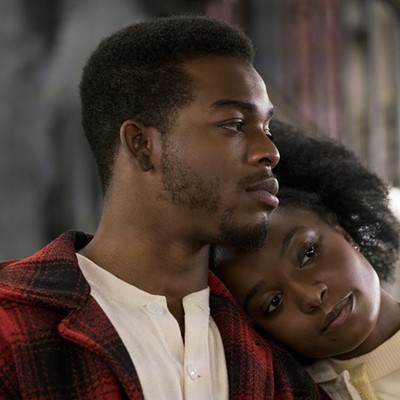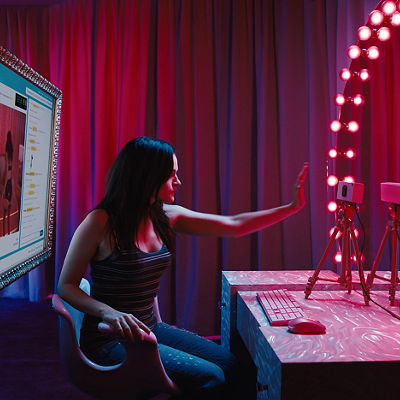He convinced the magazine to hire a neophyte photographer named Art Kane, a naive and slightly nerdy man who had established his reputation as Seventeen magazine's art director. Kane had never snapped a professional photograph in his life, which probably explains why he thought he could rouse the world's most eccentric jazz players at 10 a.m. -- when, as Kane's assistant later pointed out, these performers, who earned their keep long after the sun went down, "didn't realize there were two 10 o'clocks in the same day."
Benton figured Kane would be lucky to attract ten or 12 people. He was wrong: nearly 60 musicians ultimately showed for the shoot, fueled by equal parts curiosity and free publicity. The players were a who's who of jazz greats: Thelonious Monk, Count Basie, Dizzy Gillespie, Coleman Hawkins, Lester Young, Art Blakey, Jo Jones, Marian McPartland, Rex Smith and many others.
These were players who knew each other's music, but had never before gathered together in one star-studded group. As they arranged themselves on a Harlem stoop, they couldn't stop jawing at each other. "To try to control this group was near impossible," Kane remembered. It didn't help that Harlem was atwitter at this surprising congregation of talent. Kids were running around the streets; others were hanging out of brownstone windows trying to draw the attention of their favorite player.
It was a minor miracle that Kane squeezed off one usable shot. But he did more than that: he came away with one of the most memorable portraits in jazz history. Fifty-seven musicians eventually lined the sidewalk -- Basie sat on the curb with a row of neighborhood kids since the aging bandleader's legs had grown wobbly -- while others crowded the stairs of a nearby brownstone. What Kane caught with his camera was a funny, touching and hugely improvisational scene, a photo that (almost accidentally) captured what some consider the golden age of jazz.
Kane's photo is the focal point of Jean Bach's ticklish, Oscar-nominated documentary A Great Day in Harlem. The 76-year-old Bach, who calls herself "one of the first jazz groupies," is a longtime jazz fan who had no intention of making a documentary when, in 1989, she began conducting informal interviews with musicians who had been captured in Kane's picture. Bach started writing about the music with the Chicago Times in the early '40s; when she began talking to Kane's subjects, her intent was simply to preserve the memories of those who originally took part in the photo session.
But the deeper she dug into the history behind the picture, the more Bach realized that simple oral history wouldn't be enough to capture what was there. A documentary was called for; and her knowledge of the jazz world, she decided, wouldn't in itself be enough if she was going to make a film. So she turned to Matthew Seig, a veteran jazz documentarian who had served as an associate producer and production executive for many of Robert Altman's films, for assistance. Seig, in turn, sought out the services of acclaimed documentary editor Susan Peehl.
"Between those two, who knew what they were doing, and me, who just had the idea, we got something pulled together," Bach says now. "If I had pursued my original idea, which was to have something about everybody in the photograph, it would have been something like an eight-hour movie.''
Bach interviewed every living musician who was in the original photograph, except trumpeter Emmett Berry, who had Alzheimer's Disease (and has since died). Then Bach, Seig and Peehl edited down more than 20 hours of raw footage into a 59-minute final product. The filmmakers didn't finish their work until the spring of 1994, some four and a half years after Bach began the project.
What the trio ultimately came up with is both a peek behind the scenes of this famous photo and a paean to the musicians who filled Kane's frame. The beauty of A Great Day in Harlem lies in its editing and in its extemporaneous nature. The film is about jazz and -- in a way -- is jazz itself. Peehl edited this sucker to swing, while all three filmmakers merrily jump from idea to idea with the loose-knit connectedness of a master jazz solo.
Just one look at Kane's photo, and you realize there must be hundreds of stories to tell. Why is Dizzy sticking his tongue out at Roy Eldridge? What is Gigi Gryce carrying in that oversized envelope that's so important he can't put it down? Why is Monk wearing that bright sports coat? Where were Duke and Miles? Fortunately, Bach doesn't try to tell all the stories, but she does pack her film with lots of anecdotes. The information comes fast and furious, like a sheets-of-sound John Coltrane solo.
Nearly 30 people are interviewed in all, including Gillespie and Blakey, who both died before the documentary was released last fall. With Kane's photo in hand, these folks talk about that hectic day in 1958 and about the players who arrived that summer morning. They talk about their respect for each other, their influence on each other and their unique foibles. The filmmakers have expertly spliced in black-and-white performance footage as well as an eight-millimeter film shot by bassist Milt Hinton and his wife, Mona, on the day of the photo session. There are also archival photos and even a clip of bassist Charles Mingus in a cheesy British film titled All Night Long.
All of this is underscored with a soundtrack that includes the timeless music of Monk, Young, Basie, Hawkins, Oscar Pettiford, Willie ''The Lion'' Smith and Red Allen.
Bach's tone is conversational and relaxed. She obviously has no taste for the sordid underbelly of the jazz world, a side that has already been well-documented in both feature and documentary form. A Great Day in Harlem is, instead, mostly a lark, a swinging and amiable film that has a clear focus: to give the players who made up this incredibly fertile period the respect they deserve, minus all the social, professional and racial baggage of the time. She does this well.
A note: a passing knowledge of this jazz period is helpful, but not required. Bach's genius lies in her ability to pass along information that is neither too condescending for jazz followers nor too esoteric for beginners.
A Great Day in Harlem.
Produced by Jean Bach.
Not rated.
59 minutes.





